Overcrowded, understaffed, and overwhelmed
Sitting in his Spanish 1 class, sophomore Yamin Shaikh looks down at his paper filled with unfamiliar vocabulary terms. He wants to ask for help from his Spanish teacher, Carole Cadoppi, but is hesitant when he sees many of his 38 classmates also needing support. He looks next to him and notices that a student with a learning disability also needs assistance on their work. Shaikh realizes this is not a problem unique to him alone, but one many of his classmates are also experiencing. Lacking the help he needs during class, he doesn’t feel motivated to succeed in Spanish. To Shaikh, there are too many students and only one teacher.
As a result of understaffing, experiences like this are common among Lowell students.
Following the budget cuts San Francisco Unified School District (SFUSD) imposed last school year, Lowell is experiencing a 25 percent budget cut and widespread understaffing. After the removal of AP funding, Lowell was predicted to lose 29 teachers and staff, leaving classes cut and consolidated. Because of these predicted losses, the Lowell Alumni Association (LAA) and the Parent Teacher Student Association (PTSA) donated $900,000 to alleviate some of the impacts. However, Lowell is still suffering effects, including overcrowded classrooms and understaffing. In the World Language and Visual Performing Arts departments, teachers are struggling to attend to students’ needs, as they feel overwhelmed with the increased class sizes. Understaffing in the Learning Resources Department and the Library is resulting in students’ needs going unmet.
Lowell’s World Language Department was heavily affected by budget cuts. According to Department Chair John Raya, seven Spanish classes were consolidated, with 12 out of the 40 Spanish classes having over 35 students. For Cadoppi, she struggles to fit 38 students into her classroom. “I don’t have enough desks for one of my classes,” Cadoppi said. “Somebody has to wait and see who’s absent before they can even sit down.” According to Cadoppi, the increased class size has caused grading to take much longer, and prevented her from teaching Spanish cultural activities such as cooking and dancing. She also feels that she can’t provide appropriate attention to students and can’t teach the course like she did before. According to her, having 25 students would be much preferable. For junior Scarlett Carew, a Spanish 3 student, her large class size has minimized the individual attention each student receives from her teacher, and reduced the number of opportunities to speak out loud in class. “I learn things best by speaking and experiencing them,” Carew said. “And you don’t get to do that as much in a big Spanish class.”
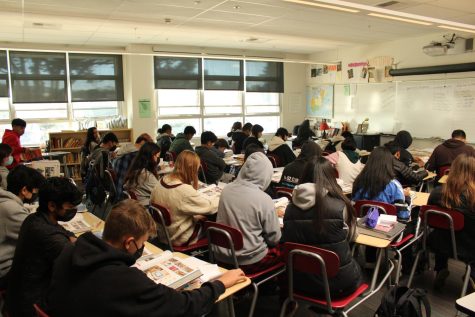
World Language teachers have taken multiple initiatives to communicate the urgency of this problem to the Lowell administration, but changes have yet to be made. According to Cadoppi, she and other World Language teachers filed several grievances to hire more teachers. To further her efforts, Cadoppi personally wrote to Lowell’s principal about how it directly affected her and other Spanish teachers both mentally and physically. “I know my colleagues, “Cadoppi said. “One of them has chronic migraines now, and another one has insomnia.” Despite these efforts, she has not gotten a response back. Cadoppi was disappointed at the lack of acknowledgement of the understaffing within the World Language Department. “We have not been sent any emails. It has not been discussed,” Cadoppi said. “When we try to bring it up, it’s just dismissed.”
Budget cuts have also negatively impacted the Visual Performing Arts (VPA) Department. It was forced to combine classes, such as Art 3 and AP Art, resulting in classrooms of around 40 students. Senior Catherine Perez said that this has been especially damaging because art classes require a certain amount of space to do projects. “At the beginning of the year, people had to share desk spaces,” Perez said. “So it’d be two or three kids per desk. People felt very squished, like they wouldn’t have the space that they usually need.” AP Art, in particular, requires the construction of a large portfolio due in December, leading to high demand for individual meetings with the teacher. According to Perez, Ms. Janssen’s art classes have too many students for this to be possible. “It’s difficult for kids to get one-on-one time with the teacher without her having to rush around and talk to ten different kids who are all like, ‘Hey, I need help with this’,” Perez said. “She just doesn’t have the ability to go around and talk to everybody.”
In addition to art classes undergoing changes, choir and band classes have also been consolidated. There is now only one band class and one advanced choir class. For the band class, VPA Department Chair Jason Chan said this has been especially detrimental due to the vast differences in skill level and style of the students. “Jazz, symphonic, and advanced bands are all in one,” Chan said. “They’re at different levels, especially jazz, [since] they play different music. Instead of being able to rehearse in class, jazz band needs to do it after school.”
Additionally, the VPA department was forced to cut both Architecture and Photography classes, taking away opportunities for students who might be interested in pursuing these fields. Architecture is only offered at a handful of SFUSD high schools, with Lowell no longer being one. After taking Architecture 1 as a sophomore, junior Madison Chou discovered an interest in pursuing the subject in higher education. With the removal of the class, she feels that she can no longer properly explore her interest in architecture. “I thought, ‘Oh this is kinda fun, I think I might want to do this in college,’” Chou said. “I was going to try it out a little bit more in depth, but that didn’t happen.”
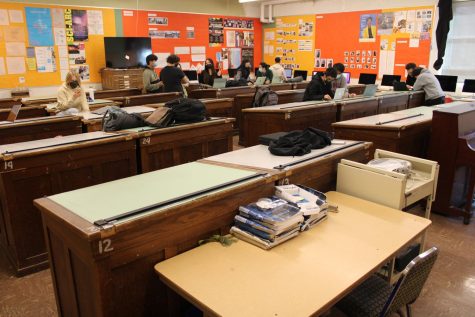
Overcrowded classrooms and understaffing is also affecting the Learning Resources Department. Currently, it is down 12 paraeducators out of a total of 39. According to Learning Resources Department Chair LaMastra Vida, paraeducators are important because they provide one-to-one support to students with behavioral and medical concerns. “[These students] are our first priority,” Vida said. “Those positions have to be filled.” According to Vida, in previous years, there were enough paraeducators within the department to substitute for teachers when they were absent. Now, teachers within the department use their lunch time to cover for other classrooms. Additionally, Chan noted that, in VPA classes, there are an insufficient number of paraeducators for these students to receive effective assistance. “We want to support them, but there’s just one of us and there are five special-ed students,” Chan said. “I feel the stress of, ‘Oh I want to help’, but I need to keep the class going, too.”
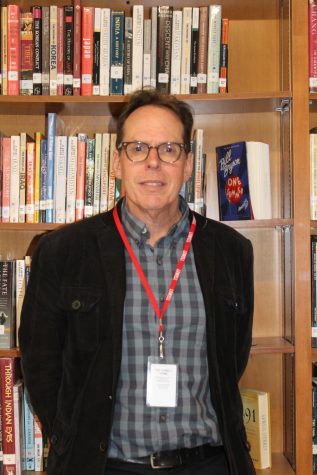
Budget cuts have also hit Lowell’s library staff. It has been cut in half, from two full-time librarians to one. This has come despite the library receiving funds from the LAA and PTSA’s $900,000 check to alleviate budget cuts. The LAA and PTSA specifically requested that the library be earmarked to receive funds to hire a second librarian. When longtime Lowell librarian Steven Sasso retired at the end of the 2021-2022 school year, Matt McDonnell was hired for the position. However, after McDonnell’s transition to assistant principal in November, there is no longer a second librarian nor an option to have one. According to the Lowell librarian Jonathan Jones, Lowell’s administration does not plan on hiring another librarian and has indefinitely closed the position, meaning the library cannot hire a substitute to help out as they had done in the past. Although most other SFUSD high schools only have one librarian, Lowell had a tradition of having two. Jones believes Lowell needs two certificated librarians, because it’s one of the most popular spots on campus and requires more than one librarian to assist students. “I’ve only been to a couple other school’s libraries, but there was only a fraction of as many students using the facilities. And even then, not for doing homework, just relaxing between classes,” Jones said. “Whereas [at Lowell,] we teach here.”
Jones voiced his frustration with the administration’s decision to close the librarian position, as one fewer librarian resulted in library closures before school and during Blocks 1 and 5. “I’m shocked at the lack of concern about what the consequences are of closing the library,” Jones said. Senior Tracy Law said she was forced to study in the hallways, because the library was closed. Due to the importance of the library as a resource, other staff members have had to temporarily fill in to maintain the library’s usual hours of operation. McDonnell monitors the library from 8 to 8:40 a.m., while Math teacher Alex Cheng takes over during first block. However, this is not a permanent solution. Due to McDonnell’s position as assistant principal, he often needs to attend to administrative duties before school, leaving no option but to close the library. Similarly, Cheng may not be able to continue to supervise the library next semester, as he is currently giving up his teacher prep period during first block to do so. Although the library can be open with approved adult supervision, Jones believes that the presence of a certificated librarian is essential to best serve students. In addition, when Jones teaches classes on information and literacy, the rest of the library must be closed if there is no other official supervision. Without the option to hire another librarian, Jones is not optimistic about the situation. “As far as I’m concerned, this is the first of many cuts that will happen,” he said.
Lowell’s financial future is unclear. The only thing that is certain is the methods that the school took to keep itself afloat are unsustainable moving forward. According to Social Studies Department Chair Rebecca Johnson, depending on outside sources of funding, including the Alumni Association and the PTSA, cannot be a long-term strategy. “The district put out this mandate last year that everyone had to take a nine percent cut. But we were facing a 25 percent cut, and that’s just unsustainable and catastrophic for us,” Johnson said. “Again, we patched the holes for a year, hoping that the district would come to realize just what 25 percent out of this school means, but I don’t know that they’re aware or that they care.”
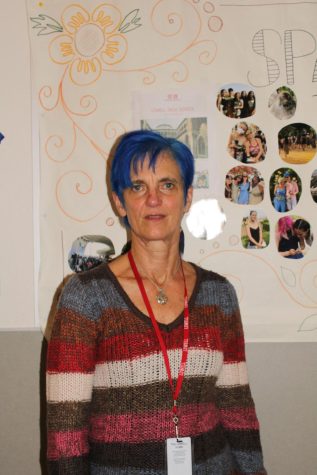
On the other hand, increased state funding does provide some hope for the future. The statewide budget has been steadily rising over the years and has been at a record high in the years following the COVID-19 pandemic. In addition, the recently passed Proposition 98 sets a guaranteed minimum budget for California public schools and could result in $37.2 billion being allocated to schools. But these increases come with a big catch. According to Julien Lafortune, a research fellow at the Public Policy Institute of California, these recent budgets often include one-time funds that will not be included in coming years. “[Budgets] could even look worse in a few years depending on how they’ve factored these one-time funds into the deficit,” Lafortune said. In terms of usage, these are lump sums that the district “can’t use to say hire someone that will stay in the district for many years in a row, because that goes away in a couple years,” Lafortune said. So, in the end, the hope among teachers that Prop. 98 will alleviate the impacts of budget cuts, including overcrowded classes and understaffing, may be dashed.
As one teacher with too many students, Cadoppi stands in her Spanish 1 class with a feeling that she cannot support all of them, including students like Shaikh. “They’re lost. They feel annoyed,” she said. “They feel invisible.”

Laura is currently a senior. In her free time, she enjoys singing along to karaoke, running, travelling, and trying new food spots across the Bay Area! Her current favorite Netflix show is Ozark.

Victoria Pan is a senior who joined The Lowell in the spring of 2022. When she isn't stressing about school, she is usually traveling, reading, or drinking boba. Victoria especially loves visiting national parks (in any country) and Disneyland (where she ends up walking more than she does in the national parks).

Maya is a senior at Lowell. One of her favourite pastimes is making fun of bad movies. She is also an avid reader and a collector of small boxes.

Malena is a senior and a photographer for The Lowell. She loves listening to music, watching movies, and playing the guitar. Some of her favorite movies are The Sandlot, Up, Ferris Bueller's Day Off, and Blended





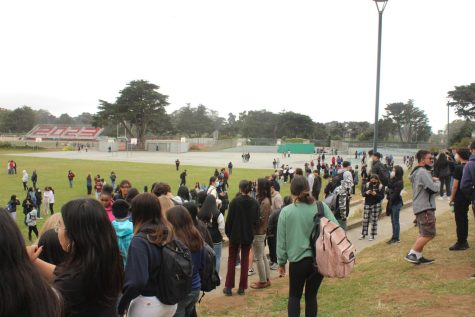
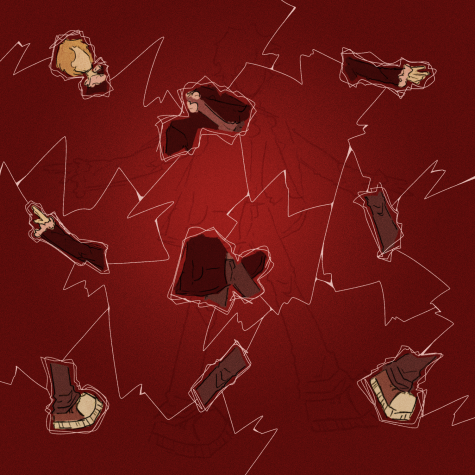





Kirsten Janssen • Jan 27, 2023 at 8:32 am
Clearing a bit up about Art 3/AP Art. Portfolios are due in May, and I eliminated Art 3 as the space, desk limitations and creative making for a double class were impossible. Art 3-now called Art 2 (second year of art) will be offered again in the Fall. AP Art and Art 1 will also be offered-Ms. Janssen